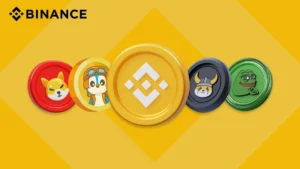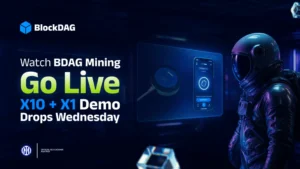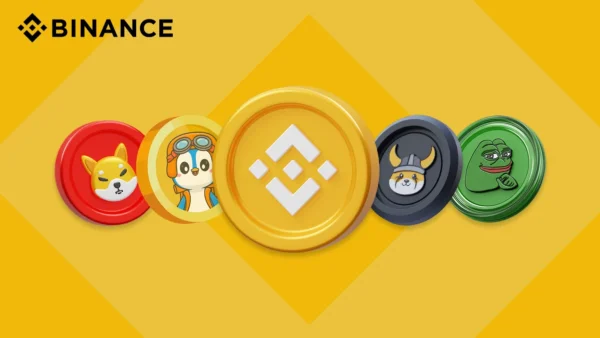- 0.2. Qubetics ($TICS): Decentralized VPN for the Web3 Generation
- 0.4. Ethereum (ETH): The King of Smart Contracts Keeps Growing
- 0.6. Solana (SOL): Speed Meets Scalability
- 0.8. Final Thoughts
The crypto market is buzzing, and 2025 is shaping up to be another wild year. Ethereum (ETH) is leading the charge, with analysts predicting it could hit the $5,000 mark soon, driven by growing demand for DeFi and NFTs. Meanwhile, Solana (SOL) is breaking records, with its open interest reaching an all-time high of $648 billion, signaling that big players are doubling down on the network’s blazing-fast transactions and scalable ecosystem.

But while Ethereum and Solana dominate headlines, Qubetics ($TICS) is quietly stealing the spotlight in a different way. This rising star isn’t just trying to keep up—it’s addressing gaps in the market that other blockchains have overlooked. One standout feature? Its upcoming decentralized VPN (dVPN) service, which redefines internet privacy and security for businesses and individuals alike. Let’s break it down.

Qubetics ($TICS): Decentralized VPN for the Web3 Generation
Qubetics is making waves, and for good reason. Its decentralized VPN (dVPN) is about to change how we think about internet privacy. Unlike traditional VPNs, which are controlled by centralized companies that can log, censor, or even sell your data, Qubetics dVPN is a fully peer-to-peer service. This means your data stays yours—period.
Imagine you’re a journalist working in a country with heavy internet censorship. With Qubetics dVPN, you can securely access the open internet without worrying about being tracked or blocked. Or think about small businesses handling sensitive customer data. They can use the dVPN to ensure secure, encrypted connections without relying on third-party providers.
The dVPN isn’t just about privacy—it’s also about creating opportunities. Users who share their bandwidth on the network earn $TICS tokens as rewards, turning idle internet connections into a source of income. Plus, multi-hop routing and end-to-end encryption ensure that your data stays secure, no matter where you are.
By integrating the dVPN into its broader ecosystem, Qubetics strengthens its value proposition for Web3 applications like DeFi, NFTs, and decentralized storage. It’s not just a product; it’s a building block for the future of decentralized tech.
And the excitement is real. The Qubetics presale is in its 16th stage, having raised over $9 million from 13,600 holders. You can grab $TICS tokens at $0.0455, but act fast—prices jump 10% this weekend when stage 17 kicks off. With innovations like the dVPN, Qubetics is solidifying its place as one of the best altcoins to hold in January 2025.
Ethereum (ETH): The King of Smart Contracts Keeps Growing
Ethereum has always been the go-to blockchain for developers, and it’s not slowing down in 2025. With its price nearing $5,000, ETH is riding high on strong fundamentals. The demand for decentralized finance (DeFi) applications and non-fungible tokens (NFTs) continues to soar, making Ethereum the backbone of Web3.
But here’s what’s really driving the excitement: Ethereum’s scalability upgrades. With Layer 2 solutions like Optimism and Arbitrum, transaction fees are dropping, and speeds are increasing. For anyone who’s ever been frustrated by sky-high gas fees, this is a game-changer.
Ethereum staking is another major factor. Over 28 million ETH is currently staked, reducing the circulating supply and putting upward pressure on prices. It’s like a perfect storm—more use cases, less supply, and a growing ecosystem.
However, Ethereum isn’t without competition. Blockchains like Solana are nipping at its heels with faster transactions and lower costs. But Ethereum’s first-mover advantage, combined with its massive developer community, keeps it ahead of the pack. If you’re looking for stability and long-term growth, ETH remains one of the best altcoins to hold in January 2025.
Solana (SOL): Speed Meets Scalability
If Ethereum is the Swiss Army knife of blockchains, Solana is the Ferrari. Known for its lightning-fast transaction speeds and ultra-low fees, Solana has become a favorite for developers and investors alike. And 2025 is shaping up to be its breakout year.
The recent news says it all: Solana’s open interest just hit $648 billion. That’s not just a big number—it’s a sign that whales and institutions are piling in, betting on Solana’s ability to scale without breaking a sweat. This level of interest isn’t surprising when you consider Solana’s performance. Its network can handle thousands of transactions per second, making it ideal for everything from DeFi to gaming.
But what really sets Solana apart is its user experience. Imagine you’re a gamer buying in-game assets or a small business processing payments. With Solana, transactions are almost instant, and fees are practically non-existent. Compare that to Ethereum’s peak gas fees, and you can see why Solana is gaining ground.
That said, Solana isn’t perfect. Network outages have plagued its reputation, and skeptics argue that its decentralization could be stronger. But with ongoing upgrades and a growing ecosystem, Solana is proving it’s here for the long haul. For investors looking for high-risk, high-reward opportunities, SOL is one of the best altcoins to hold in January 2025.

Final Thoughts
So, there you have it—three blockchain heavyweights, each offering something unique. Qubetics is breaking new ground with its decentralized VPN, solving real-world problems and setting the stage for Web3 innovation. Ethereum continues to dominate as the backbone of DeFi and NFTs, while Solana’s speed and scalability make it a force to be reckoned with.
If you’re building a portfolio for January 2025, these three projects deserve a closer look. Based on the latest research, we recommend Qubetics, Ethereum, and Solana as the best altcoins to hold in January 2025. Don’t wait—crypto markets move fast, and opportunities like this don’t last forever. Make your move today.

Qubetics: https://qubetics.com/
Telegram: https://t.me/qubetics
Twitter: https://twitter.com/qubetics
This article is not intended as financial advice. Educational purposes only.










